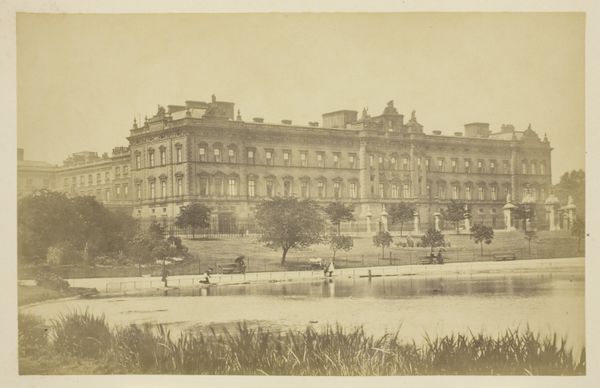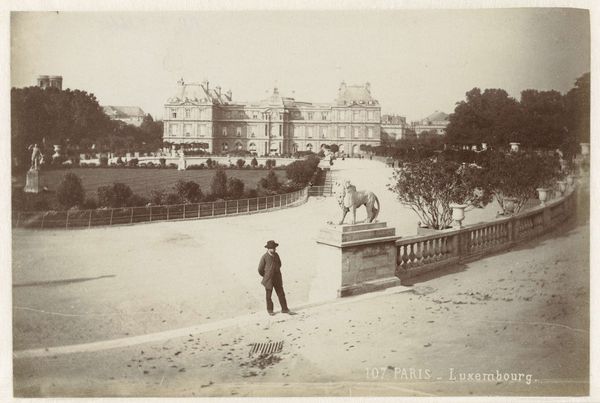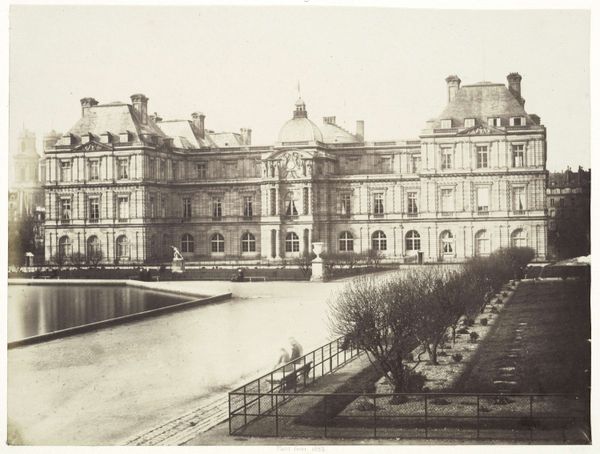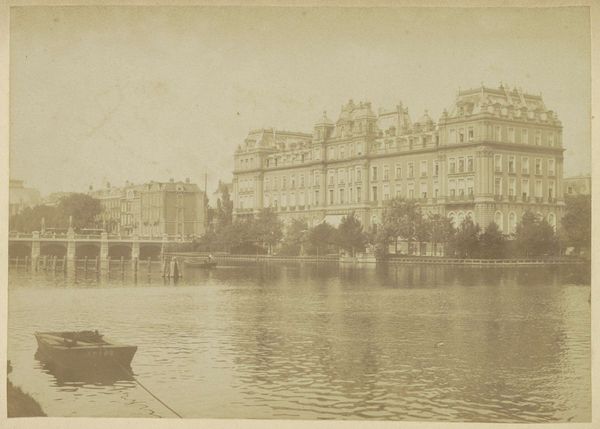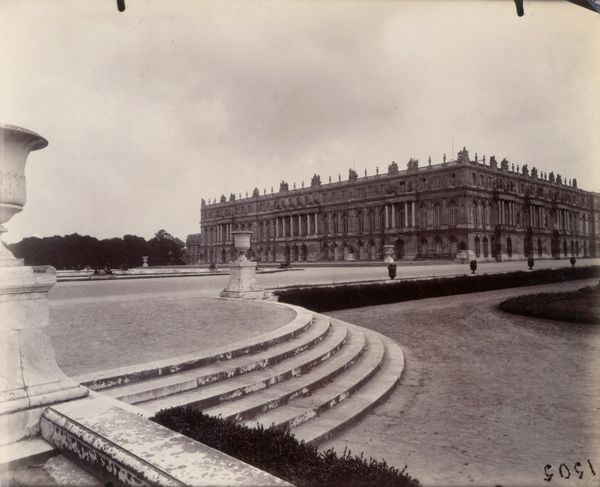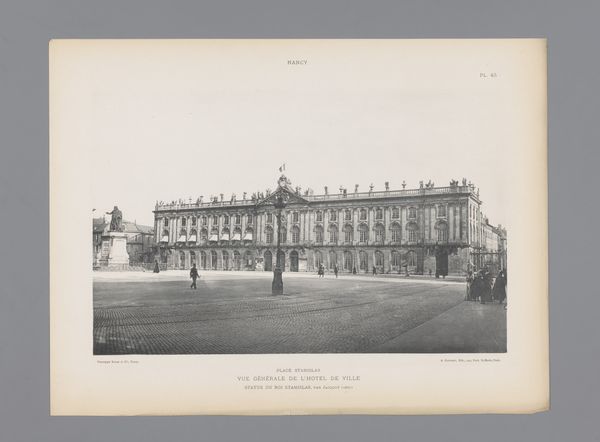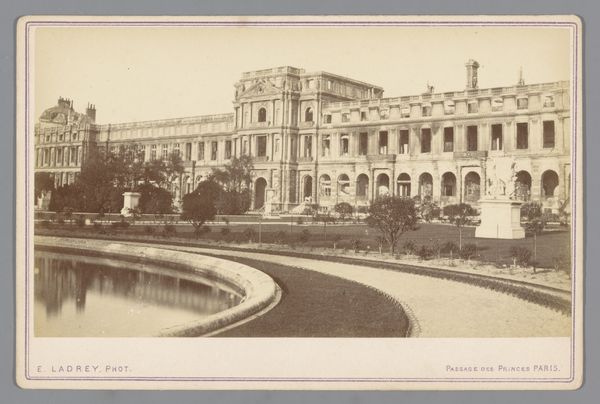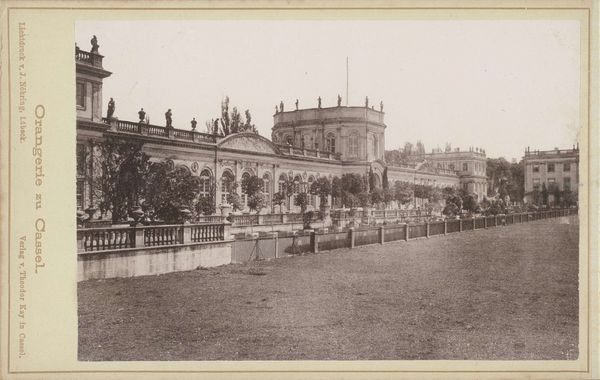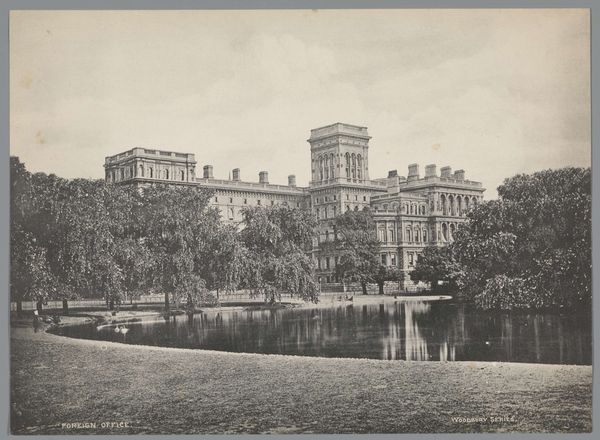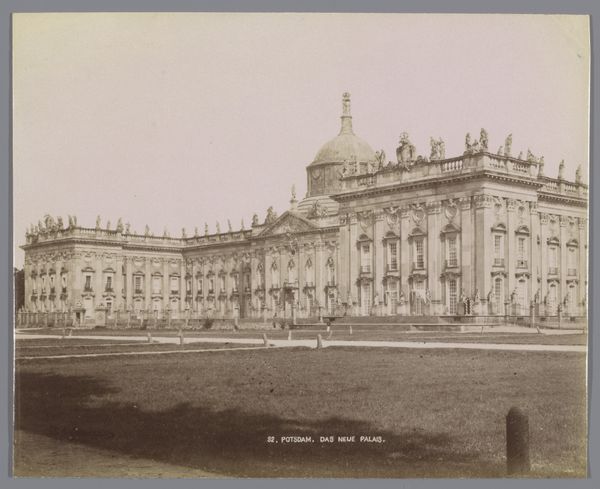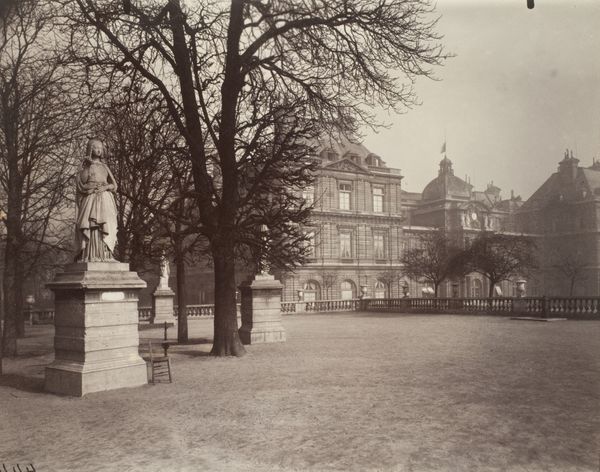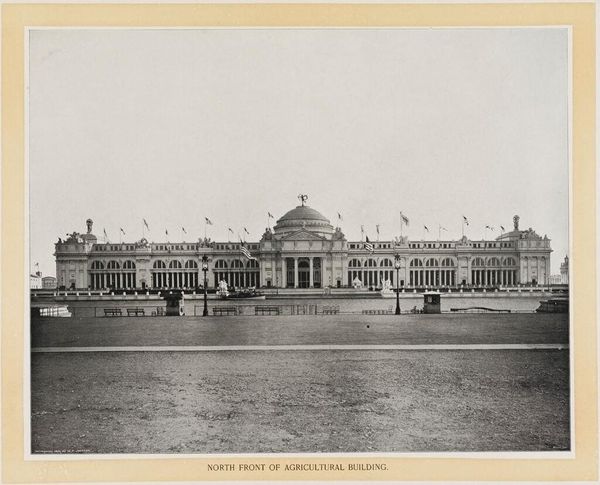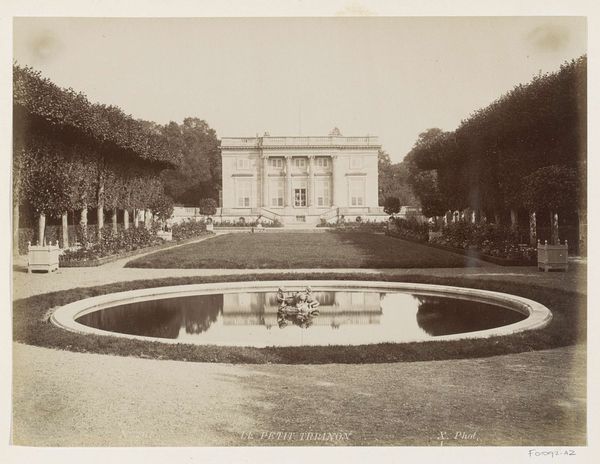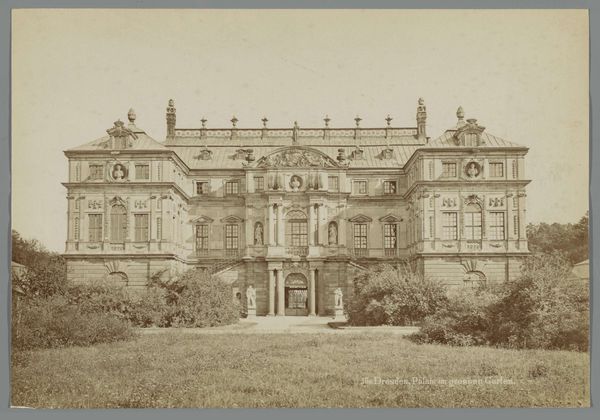
Vijver met spelende kinderen bij het Palais du Luxembourg (zuidgevel) in Parijs c. 1880 - 1900
0:00
0:00
plein-air, photography, gelatin-silver-print
#
impressionism
#
plein-air
#
landscape
#
photography
#
historical photography
#
child
#
gelatin-silver-print
#
19th century
#
cityscape
#
building
Dimensions: height 219 mm, width 280 mm
Copyright: Rijks Museum: Open Domain
Editor: This gelatin-silver print, taken by Louis Antoine Pamard between 1880 and 1900, captures the south facade of the Palais du Luxembourg with children playing by the pond. There's a wistful, almost staged quality to it. What strikes you most about this photograph? Curator: The photograph really highlights the constructed nature of public space in late 19th century Paris. We see this grand palace, a symbol of power, carefully framed. Yet, the inclusion of the children softens that power, suggesting perhaps, an attempt by the authorities to cultivate a certain image of themselves. Editor: Image as in "propaganda"? Curator: Not necessarily in the overtly manipulative sense we might understand it today. Think more about it as constructing an ideal, public life centered around civic spaces and promoting a vision of French society – ordered, yet with elements of leisure. Editor: It’s interesting that you point that out. I was so focused on the apparent innocence of childhood. Is it possible Pamard intentionally juxtaposed that with the Palais to create that sense of social harmony, the controlled grandeur versus natural, youthful energy? Curator: Exactly! Pamard, whether consciously or not, participated in the visual language of his time. Photographs like these were used and circulated widely, helping shape public perception. Where were they shown, I wonder, and who had access? What might this "idyllic" scene obscure about the realities of childhood for other classes in Paris at that time? These questions, while perhaps unanswerable without further research, point towards the importance of thinking critically about the messages embedded within seemingly simple images. Editor: I hadn't considered the image's broader circulation and impact. Thanks, I'll definitely be researching the context and the role it played in shaping public perception!
Comments
No comments
Be the first to comment and join the conversation on the ultimate creative platform.
